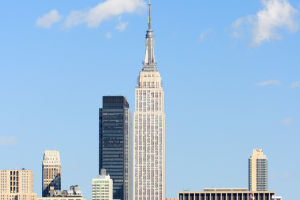When people think of Europe, they often envision the magnificent castles and ancient churches that have stood for centuries. However, it's worth noting that contemporary architecture in Europe is also worth exploring.
While some may argue that Belgium lacks the modern architectural appeal of other cities, there are still numerous stunning buildings that are worth a special visit. Today, we will take a closer look at some of these newer architectural gems that showcase Belgium's modern design.
One notable example is the Tondo Footbridge, a pedestrian bridge that connects the Federal Assembly with its newly expanded Forum building. This bridge not only serves as an infrastructural solution but also stands as an independent architectural element.
The bridge derives its name from the "Tondo," a reference to Renaissance circular paintings. Its circular shape is sandwiched between two elevations, creating a spacious pedestrian space within an enclosed exterior-facing area. Moreover, the bridge offers a perfect spot for short breaks and meetings.
To ensure accessibility, a 4% accessibility slope connects the two buildings, overcoming the challenge of a steep incline that wouldn't meet accessibility standards. Structurally, the bridge is a rigid steel circle with a load-bearing roof and a suspended floor below. Its roof consists of four prefabricated steel plates, forming a hollow core.
The addition of vertical "fins" further enhances the structure's stiffness and acts as transverse beams. Additionally, the steel beam structure of the floor is supported by 32 steel cables. The bridge's surface is finished with cast-in-place concrete, providing durability against lateral loads.
Its facade is adorned with composite aluminum mirror-polished panels, reflecting the Parliament and Forum buildings, while curved glass allows stunning views of the street below.
Another remarkable architectural renovation is the Palais des Momoirs. Initially transformed into a cinema in 1950 and later into a "mini-cinema" in 1999, the recent complete renovation has turned it into a multicultural exchange center.
The cinema complex now boasts four screening halls primarily dedicated to showcasing art films. Additionally, these halls serve as spaces for teaching and hosting various events, fostering cultural diversity and interaction.
One cannot discuss architecture in Belgium without mentioning the iconic Grand Place of Brussels. Revered as "the most beautiful square in the world" by the French writer Victor Hugo, it stands as a true landmark of the city.
The square's allure lies in its remarkable blend of public and private buildings, most of which were constructed in the late 17th century. These Gothic, Renaissance, and Louis XIV buildings originally served as guild association halls.
Despite its compact size, the Grand Place exudes a friendly and inviting atmosphere, making it a must-visit destination.
Lastly, Belgium and France share a rich heritage of bell towers. Dating back to the 11th to 17th centuries, there are 23 bell towers in northern France and 33 in Belgium. Together, they showcase a range of architectural styles, including Roman, Gothic, Renaissance, and Baroque.
These bell towers were not only functional structures but also symbols of communal independence, representing freedom through their charters.
While Europe's historic castles and churches capture the imagination of visitors, Belgium boasts its own collection of remarkable contemporary buildings.
From the circular elegance of the Tondo Footbridge to the transformed Palais des Momoirs and the timeless charm of the Grand Place, Belgium offers architectural marvels that blend the old with the new.
Moreover, the bell towers in Belgium and France stand as enduring symbols of communal independence. So, whether you are a fan of historic architecture or appreciate the allure of modern design, Belgium has much to offer for architectural enthusiasts.


